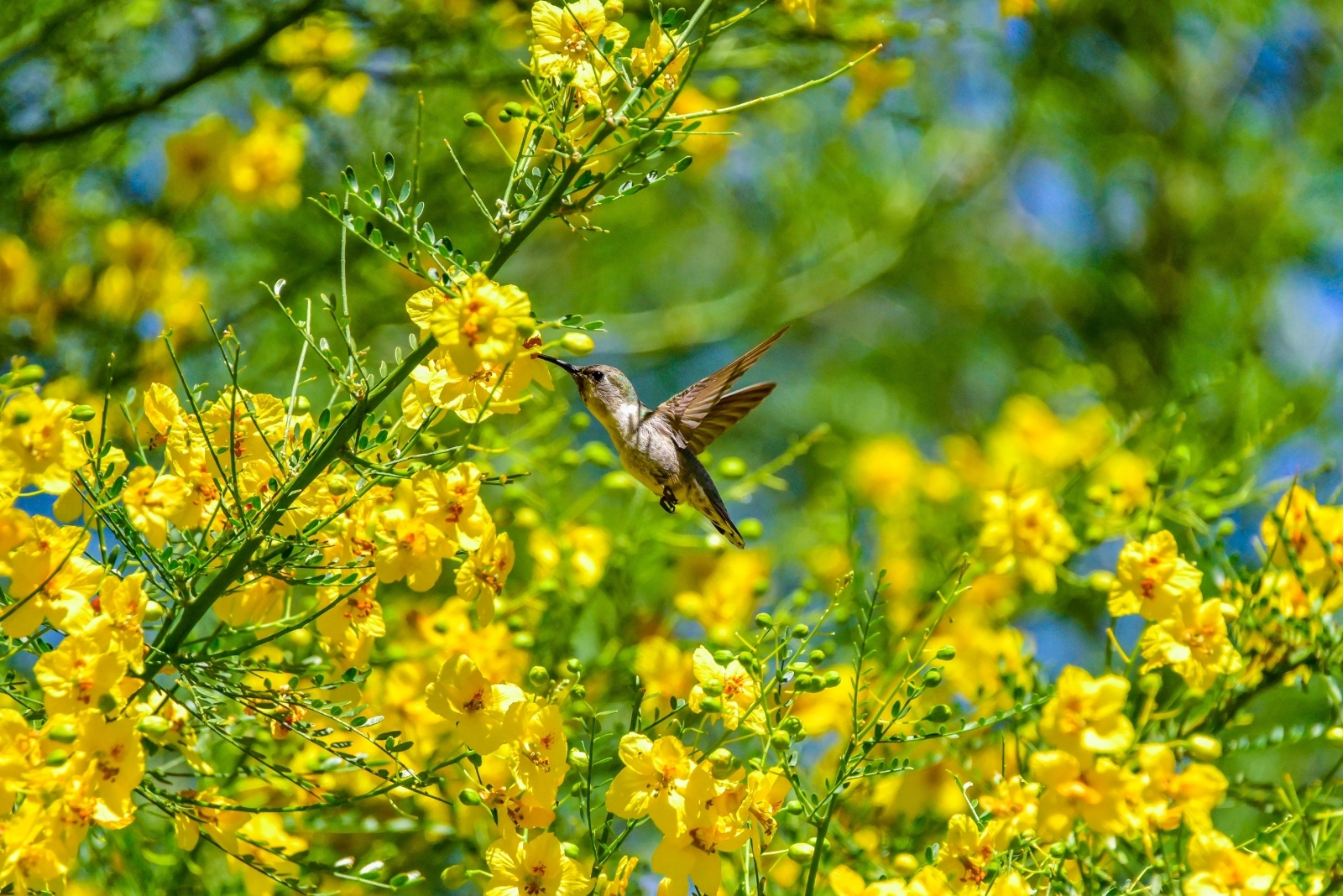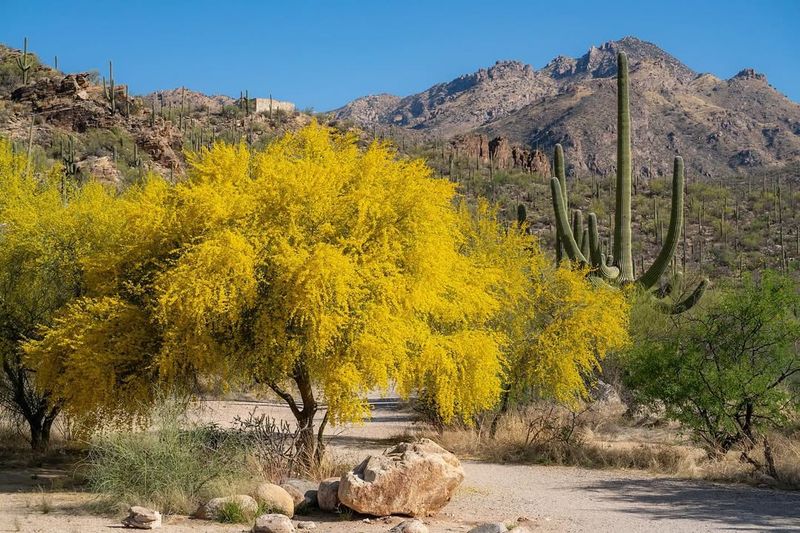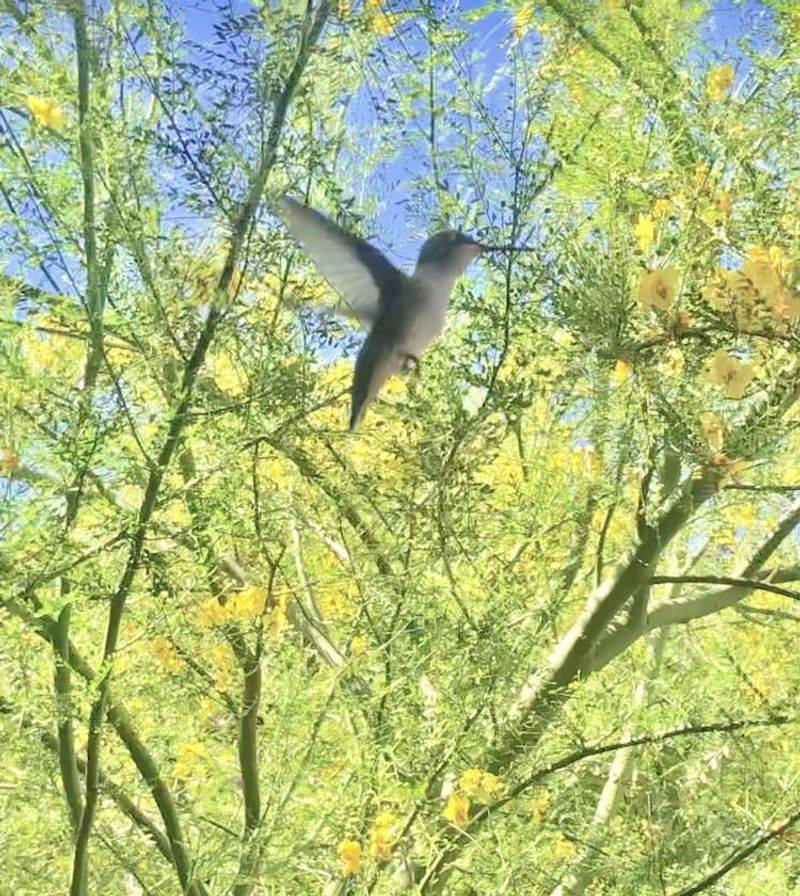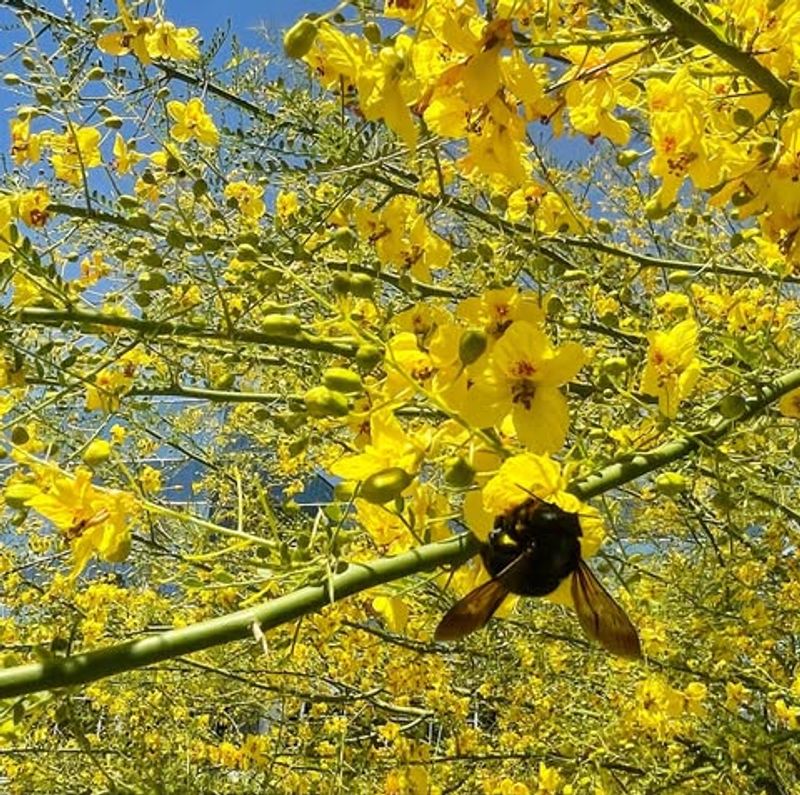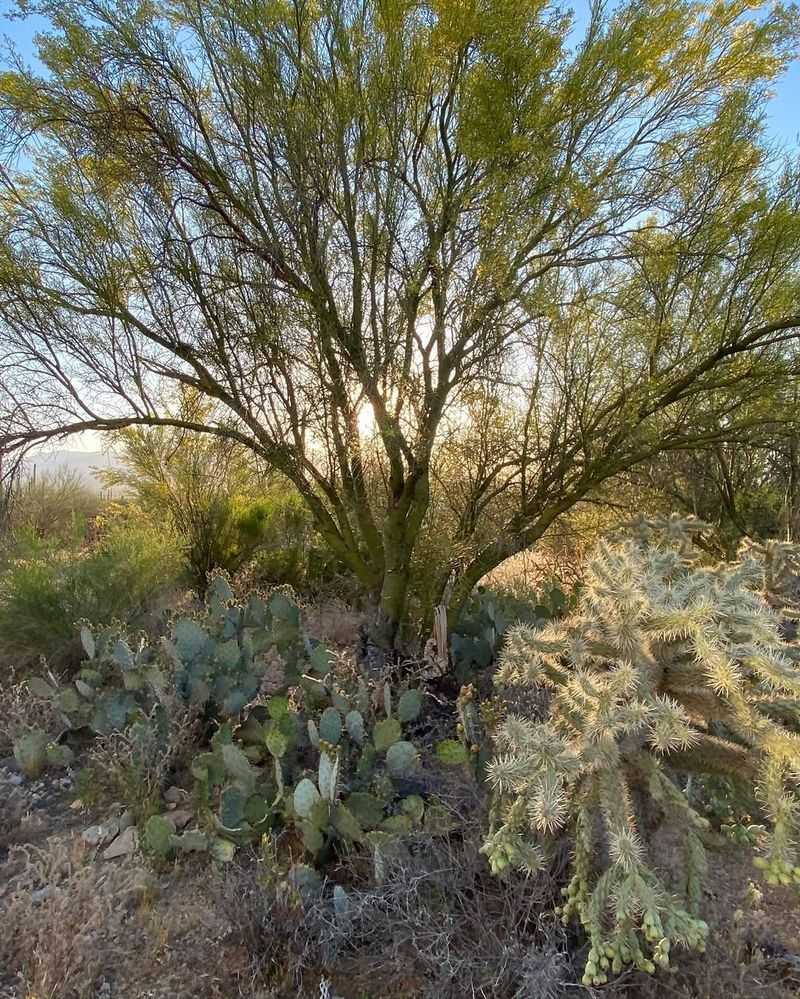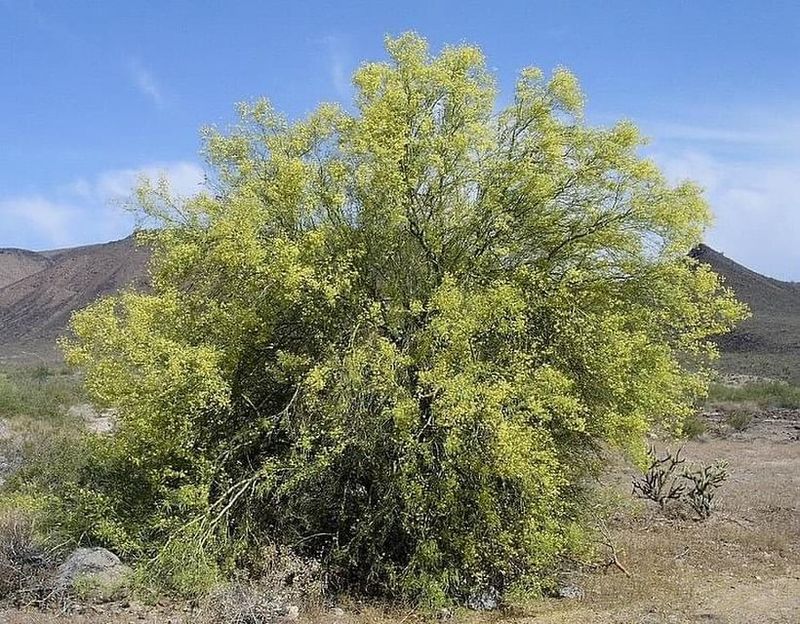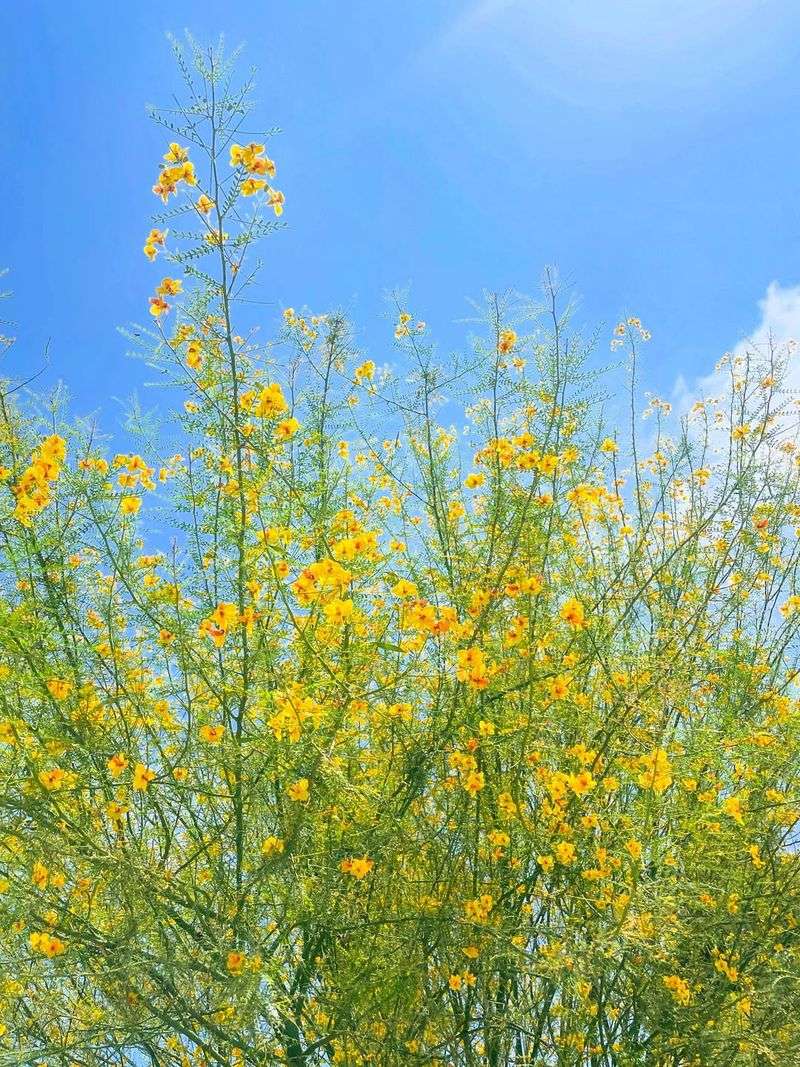In Arizona, there’s one tree that’s a superstar for attracting pollinators — the Palo Verde. Its vibrant green bark and brilliant blooms make it a magnet for bees, butterflies, and hummingbirds.
Planting one turns any garden into a buzzing paradise. Let the Palo Verde bring life and color to your Arizona yard.
1. Bee Magnet Blooms
Honeybees can’t resist the golden explosion of Palo Verde flowers that blanket these trees each spring. The abundant nectar provides crucial early-season food when other Arizona plants haven’t yet bloomed.
Local beekeepers often report higher honey production in areas with Palo Verde trees. The distinctive honey carries subtle citrus notes unique to Arizona’s desert landscape, making these trees valuable both ecologically and economically.
2. Butterfly Paradise
Countless butterflies flock to Palo Verde trees, using them as both food sources and protected resting spots. The dappled shade created by their feathery foliage offers perfect microhabitats for delicate desert butterflies.
Arizona’s native Pipevine Swallowtail butterflies particularly benefit from the tree’s structure. Their caterpillars often feed on plants growing beneath Palo Verdes, where the filtered light creates ideal conditions for understory growth.
3. Hummingbird Haven
While not their primary food source, hummingbirds regularly visit Palo Verde blossoms for supplementary nectar. The tree’s open structure allows these aerial acrobats to maneuver easily between branches while feeding.
Arizona gardeners often plant nectar-rich companions beneath Palo Verdes, creating multi-layered feeding stations. This combination transforms ordinary yards into hummingbird hotspots where these jewel-toned birds perform their mesmerizing aerial displays year-round.
4. Native Bee Nurseries
The soft pithy wood inside older Palo Verde branches provides perfect nesting sites for Arizona’s solitary bee species. These native pollinators drill tiny tunnels where they lay eggs and provision food for their young.
Unlike honeybees, these solitary bees rarely sting and are crucial for pollinating many desert plants. Arizona gardeners who leave dead Palo Verde branches in place often discover fascinating bee hotels developing naturally throughout their landscapes.
5. Beneficial Beetle Habitat
The textured bark and complex structure of Palo Verde trees create perfect hunting grounds for predatory beetles. These beneficial insects patrol the branches seeking aphids and other garden pests, providing natural pest control for Arizona gardeners.
Ladybugs particularly thrive in Palo Verde canopies. Their larvae voraciously consume plant-damaging pests, helping maintain healthy garden ecosystems without chemical interventions in the harsh Arizona climate.
6. Nighttime Moth Sanctuary
After sunset, Palo Verde trees transform into bustling nightclubs for Arizona’s native moths. These often-overlooked pollinators visit the pale flowers that remain visible in moonlight, continuing the pollination process after bees have returned to their hives.
Many of Arizona’s native sphinx moths have specialized relationships with desert plants growing beneath Palo Verdes. The trees create protected microclimates where these remarkable night-fliers can complete their life cycles despite harsh desert conditions.
7. Seed Pod Banquets
Long after the flowers fade, Palo Verde seed pods provide crucial food for Arizona’s seed-eating birds and insects. These protein-rich pods remain on the tree for months, offering sustained nutrition during challenging periods in the desert’s seasonal cycles.
Quail families often gather beneath Palo Verdes to feast on fallen seeds. Arizona gardeners who plant these trees create important feeding stations that help native wildlife survive through the desert’s intense summer heat and periodic drought conditions.

